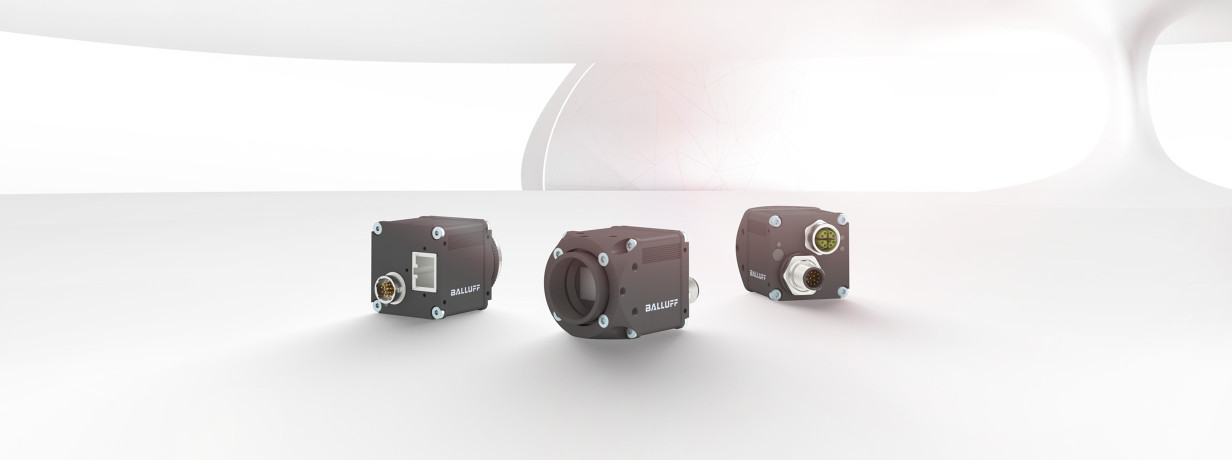GigE Vision
The standard for high-performance machine vision cameras

GigE Vision is an interface standard for industrial image processing published in 2006. The underlying network structure GigE (Gigabit Ethernet) is effectively present in every company, which means that the existing infrastructure can be used for image processing applications without any problems. GigE Vision defines a transport layer for secure and transparent communication: it governs the finding of a device, the configuration, the streaming of data and the handling of events.
GigE Vision also includes, among other things, standardized communication and control modes for cameras, which reduces system integration costs while increasing the usability of machine vision systems. Dual GigE and 10 GigE interfaces have also been supported since 2012 - industrial cameras from Balluff cover all three variants.
The advantages
The standardized GigE Vision camera communication protocol impresses with many features that were previously not available via a single interface.
-
Maximum flexibility
Special hardware such as frame grabber cards is not required. This means that the software used can be used flexibly. -
Accelerated data transmission
GigE Vision ensures high-speed data transmission because it reduces overhead and latency thanks to User Datagram Protocol (UDP). -
Convenient connection
Once an image processing software library supports GigE Vision, it can be used with any compatible camera.
All good things come in threes: GigE, dual GigE and 10 GigE
While standard Ethernet has a maximum data transfer rate of 10 Mbit/s and Fast Ethernet a maximum transfer rate of 100 Mbit/s, Gigabit Ethernet supports a gross bandwidth of 1000 Mbit/s - perfect for reliably transferring image data from high-performance machine vision cameras. A maximum cable length of 100 m is possible, and link aggregation allows two lines to be coupled. This makes the interface suitable for applications with an existing network structure and long distances, as well as for applications that require high flexibility and scalability.
However, interfaces such as GigE or even USB 2.0 have a natural limit with the bandwidth, which excludes faster cameras with higher resolutions. This is where dual GigE cameras come in: with, as the name suggests, twice the bandwidth (≤ 240 Mbytes) while maintaining transparency in the software (the camera appears as one device). Since GigE Vision 2.0 defines dual GigE, the cameras can rely on a mature, established standard.
Compared to 10 GigE, Dual-GigE scores with easier programming and lower power consumption. In addition, existing network infrastructures can be used here, while 10 GigE infrastructures are not yet widespread. Dual GigE also has these advantages over other interfaces such as USB3, CoaXPress and Camera Link HS.
Our products
Industrial cameras from Balluff are made for the high demands of modern production facilities and are extremely easy to integrate and operate.
All our cameras with GigE interface are compliant with the image processing standards GenICam, GenTL (Producer) and GigE Vision.
We are actively shaping industrial image processing: We have always been at the forefront as a driving force in various standardization committees - including the GigE Vision committee.
